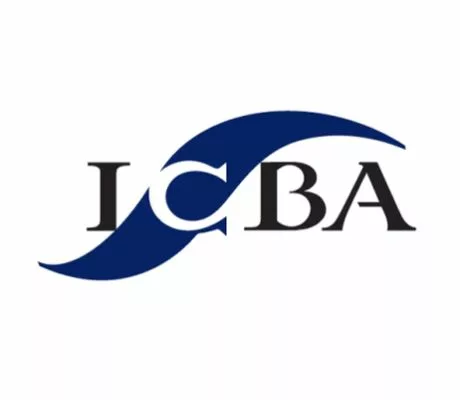The 10-year Treasury yield reaching levels not seen in 15 years has become a major concern for regional banks. With the yield hitting 4.8%, community banks are facing potential challenges in managing their portfolios and maintaining profitability. This article explores the implications of the rising treasury yield on regional banks and the steps that need to be taken to mitigate the risks.
Table of Contents
10-year Treasury yield Major Concern for Regional Banks
The ten-year treasury yield has reached 4.8% to levels not seen in 15 years. This significant increase in the yield is causing major concerns for regional banks. The yield on the ten-year treasury serves as a benchmark for interest rates on various financial products, including mortgages and car loans.
The rising yield has the potential to increase borrowing costs for businesses and individuals, which can negatively impact loan demand and profitability for banks. Regional banks, in particular, are more vulnerable to interest rate fluctuations compared to their larger counterparts. This is because these banks rely heavily on interest income from loans to generate profits.
Higher interest rates can also lead to an increase in loan delinquencies and defaults, as borrowers may struggle to meet their debt payments. Regional banks must carefully monitor their loan portfolios and assess the creditworthiness of their borrowers to mitigate these risks.
To respond to the rising treasury yield, regional banks may need to adjust their lending rates and loan products. They may also need to reassess their risk profiles and strengthen their risk management practices to minimize potential losses.
Overall, the current surge in the ten-year treasury yield poses a significant challenge for regional banks. These banks must actively monitor interest rate movements and implement appropriate strategies to mitigate the impact on their loan portfolios and profitability.
PNC Buys Former Signature Bank Private Equity Loan Book
In a significant move, PNC Bank has acquired $16.6 billion in loans from the FDIC, nearly seven months after Signature Bank’s collapse. This acquisition allows PNC Bank to expand its presence in the private equity lending space and strengthens its loan portfolio.
Signature Bank’s collapse was a result of various factors, including the economic downturn and poor loan performance. PNC Bank’s decision to acquire Signature Bank’s loan book indicates the bank’s confidence in the underlying assets and its ability to manage credit risk effectively.
Acquiring loan portfolios can be a strategic move for banks as it allows them to diversify their loan offerings and enhance their revenue streams. However, it also presents challenges in integrating the acquired assets and aligning them with the acquiring bank’s risk appetite.
PNC Bank will need to conduct thorough due diligence on the acquired loans to assess their quality and identify any potential risks. This includes evaluating the creditworthiness of the borrowers and the collateral securing the loans. The bank must also ensure that it has the necessary infrastructure and resources to effectively manage the acquired loan portfolio.
Overall, PNC Bank’s acquisition of Signature Bank’s private equity loan book is a significant development in the banking industry. It demonstrates the bank’s commitment to expanding its lending capabilities and seizing opportunities in the market.

This image is property of www.bankingexchange.com.
Norcross Braca Group will Invest at Least $35 Million in Republic Bank
Republic Bank is overhauling its operations after a difficult first quarter. To support this transformation, the Norcross Braca Group has announced its intention to invest at least $35 million in Republic Bank. This injection of capital will provide the bank with the necessary resources to strengthen its financial position and implement its strategic initiatives.
The decision by the Norcross Braca Group to invest in Republic Bank indicates confidence in the bank’s long-term prospects and its management team. This investment will enable Republic Bank to enhance its product and service offerings, improve its technology platforms, and expand its customer base.
The first quarter was challenging for Republic Bank, as it faced declining revenues and increased loan delinquencies. However, with the support of the Norcross Braca Group, the bank is now poised to turn its performance around and achieve long-term success.
Republic Bank will need to execute its strategic initiatives effectively to restore profitability and regain investor confidence. This will require effective cost management, prudent risk assessment, and a focus on customer retention and acquisition.
The investment by the Norcross Braca Group is a positive development for Republic Bank and the broader banking industry. It demonstrates the resilience and potential for growth in regional banks, despite the challenges they may face.
DFCU Financial to Acquire MidWestOne’s Florida Operations
DFCU Financial has announced its plans to acquire MidWestOne’s Florida operations in a deal valued at $12 million. This acquisition is the latest in a series of credit union-bank tie-ups that have occurred in recent months.
The trend of credit union-bank tie-ups reflects the increasing consolidation in the financial services industry. Credit unions are seeking to enhance their product offerings and expand their geographic reach, while banks are looking to divest non-core assets and focus on their core businesses.
For DFCU Financial, the acquisition of MidWestOne’s Florida operations provides an opportunity to deepen its presence in the Florida market and serve a larger customer base. The credit union will need to conduct due diligence on the acquired operations to ensure a smooth integration and minimize any potential risks.
Credit union-bank tie-ups can benefit both parties involved. Credit unions can leverage the banking expertise of the acquired institution and gain access to a broader range of products and services. Banks, on the other hand, can realize the value of their non-core assets and focus on their core competencies.
Overall, the acquisition of MidWestOne’s Florida operations by DFCU Financial demonstrates the ongoing trend of credit union-bank tie-ups. This consolidation in the industry is likely to continue as financial institutions seek economies of scale and enhanced capabilities to better serve their customers.

This image is property of www.bankingexchange.com.
Eastern Bankshares Merges with Cambridge Bancorp
In a significant merger, Eastern Bankshares will merge with Cambridge Bancorp. Eastern Bankshares will also sell its insurance arm to Arthur J. Gallagher & Co. This strategic move aims to strengthen Eastern Bankshares’ position in the market and enhance its capabilities in both banking and insurance.
Mergers and acquisitions have become increasingly common in the banking industry as financial institutions look to achieve economies of scale, improve operational efficiency, and expand their market share. By merging with Cambridge Bancorp, Eastern Bankshares can pool its resources and expertise to create a stronger organization.
The sale of Eastern Bankshares’ insurance arm to Arthur J. Gallagher & Co. allows the bank to focus on its core banking operations while ensuring that its insurance customers continue to receive quality service. This divestiture enables Eastern Bankshares to streamline its operations and allocate resources more effectively.
The successful execution of this merger will require careful integration planning and effective communication with employees, customers, and other stakeholders. It is essential to ensure a smooth transition and minimize any disruptions to business operations.
Overall, the merger between Eastern Bankshares and Cambridge Bancorp, along with the sale of Eastern Bankshares’ insurance arm, represents a strategic move by the bank to strengthen its position in the market and enhance its capabilities. This consolidation reflects the ongoing trend of mergers and acquisitions in the banking industry and is likely to continue as financial institutions seek growth opportunities and operational efficiencies.
Appointments latest: New CEO at New Peoples
Several executive changes have taken place in the banking industry, including the appointment of a new CEO at New Peoples Bank. This executive change is a significant development for the bank and represents a strategic decision to drive growth and enhance performance.
The appointment of a new CEO is often a reflection of a bank’s desire to implement new strategies, improve operational efficiency, and respond to evolving industry trends. New Peoples Bank’s decision to bring in new leadership indicates its commitment to positioning itself for future success.
In addition to the appointment at New Peoples Bank, there have been executive changes at United Bank, Agility, NYCB, First Western, Bank of the Sierra, and Valley National Bank. These changes reflect the dynamic nature of the banking industry and the need for banks to adapt to changing market conditions.
Effective leadership is essential for banks to navigate the challenges and opportunities in the industry successfully. The new CEOs and executives will need to bring their leadership skills, industry expertise, and strategic vision to drive their respective organizations forward.
While executive changes can bring fresh perspectives and new ideas, they also present challenges in terms of organizational culture, employee morale, and stakeholder communication. It is crucial for the new CEOs and executives to effectively manage these transitions and ensure a smooth integration into their respective organizations.
Overall, the recent executive changes in the banking industry highlight the importance of strong leadership in driving growth and performance. These appointments represent a commitment to adaptability and innovation in the face of industry disruptions and evolving customer needs.

This image is property of www.bankingexchange.com.
ICBA: Congress Must Investigate Credit Union Tax Exemption
The Independent Community Bankers of America (ICBA) has called for Congress to investigate the tax exemption granted to credit unions. This statement follows announcements that credit unions will acquire five community banks this week, further fueling concerns about the competitive advantage credit unions have over community banks.
The tax exemption granted to credit unions is a significant point of contention between community banks and credit unions. Community banks argue that the tax advantages enjoyed by credit unions give them an unfair competitive edge, allowing them to offer lower loan rates and fees.
The ICBA’s call for a congressional investigation highlights the urgency and seriousness of this issue. Community banks are concerned that the continued expansion of credit unions will further erode their market share and make it increasingly challenging for them to compete.
It remains to be seen whether Congress will take action to investigate the tax exemption granted to credit unions. However, this issue has sparked an important conversation about the need for a level playing field in the financial services industry.
Community banks play a vital role in supporting local economies and providing access to credit for small businesses and individuals. It is crucial for policymakers to carefully consider the implications of the tax exemption and ensure that community banks can compete effectively in the market.
Credit Unions Snap Up Community Banks
A flurry of deals in late August saw mergers and acquisitions announced in North Carolina, Pennsylvania, Michigan, and Alabama. Credit unions are continuing to snap up community banks, raising concerns among community bankers and prompting calls for investigation of the credit union tax exemption.
The acquisition of community banks by credit unions has become an increasingly common trend in the banking industry. Credit unions, which are member-owned not-for-profit institutions, see these acquisitions as an opportunity to expand their geographic reach and provide additional services to their members.
Community bankers argue that credit unions have an unfair advantage due to their tax-exempt status, which allows them to offer more favorable loan rates and fees. They argue that this creates an unlevel playing field and undermines the competitive position of community banks.
The recent wave of credit union acquisitions has fueled concerns among community bankers about the future of their industry. They worry that continued consolidation will lead to a decline in the number of community banks and result in reduced access to credit for small businesses and individuals.
The calls for an investigation into the credit union tax exemption reflect the increasing frustration and anxiety among community bankers. They believe that a review of the tax privileges enjoyed by credit unions is necessary to ensure fair competition in the banking industry.
As the trend of credit unions acquiring community banks continues, it remains to be seen how policymakers will respond to the concerns raised by community bankers. The outcome of any potential investigation could have significant implications for the future of both community banks and credit unions.
Canadian Banks Miss Estimates Thanks in Part to Interest Rate Hikes
Scotia Bank and the Bank of Montreal both missed quarterly profit targets this week, with rising interest rates being one of the contributing factors. The Canadian banks’ earnings were impacted by the Bank of Canada’s decision to raise interest rates, which increased borrowing costs and reduced demand for credit.
Higher interest rates can significantly impact the profitability of banks by increasing the cost of funds and reducing loan demand. Borrowers may become less willing to take on additional debt or delay their borrowing decisions until interest rates stabilize. This can lead to a decrease in loan volume and interest income for banks.
The Bank of Canada’s decision to raise interest rates reflects concerns about inflationary pressures and the need to normalize monetary policy. While higher interest rates can be beneficial for savers, they pose challenges for banks in generating profits.
Scotia Bank and the Bank of Montreal’s earnings miss highlights the importance of banks effectively managing interest rate risk. Banks must carefully monitor interest rate movements and adjust their lending rates and loan products to account for changes in borrowing costs and customer demand.
Additionally, banks may need to diversify their revenue streams and explore alternative sources of income beyond traditional lending activities. This could involve expanding fee-based services or diversifying into non-interest income generating businesses.
Overall, the earnings miss by Scotia Bank and the Bank of Montreal underscores the challenges that banks face in a rising interest rate environment. It serves as a reminder of the importance of effective risk management and strategic planning to mitigate the impact of interest rate fluctuations.
10 Year Treasury Yields Hit High
The United States Treasury yields are a good indicator of investor confidence in the economy. The ten-year treasury yield has reached 4.8%, a level not seen in 15 years. This significant increase in yields reflects growing optimism about economic growth and higher inflation expectations.
Treasury yields are a key benchmark for interest rates on various financial products, including mortgages and car loans. When treasury yields rise, borrowing costs for businesses and individuals also increase. This can potentially impact loan demand and profitability for banks.
Higher treasury yields can also attract investors away from riskier assets, such as stocks, and towards safer investments like U.S. government bonds. This shift in investor sentiment can impact stock markets and other financial markets, leading to increased volatility.
Banks must closely monitor treasury yields and adjust their lending rates accordingly. Higher borrowing costs can affect loan demand and require banks to reassess their risk profiles. It is essential for banks to stay agile and anticipate potential changes in the interest rate environment.
The increase in treasury yields also has implications for monetary policy. Central banks, such as the Federal Reserve, may respond to rising yields by adjusting their monetary policy stance. This could include raising interest rates to curb inflationary pressures or adjusting other policy tools to manage market conditions.
Overall, the rise in treasury yields reflects the dynamics of the financial markets and investor sentiment. It has implications for borrowing costs, loan demand, stock markets, and monetary policy. Banks must carefully monitor and respond to these changes to effectively manage their operations and serve their customers.

